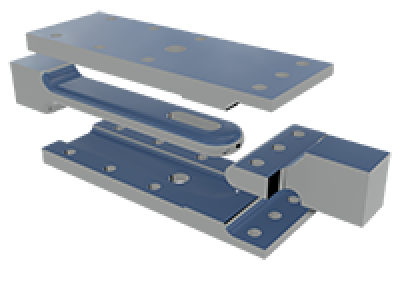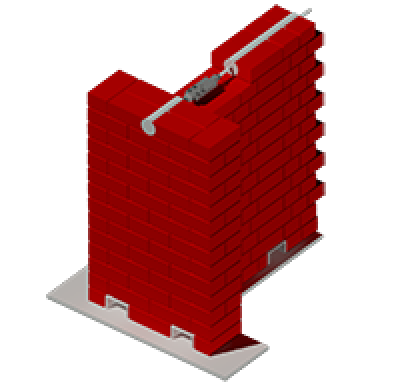Post-earthquake scenarios provide clear evidence that structural connections are crucial in determining the resistance of buildings to seismic action. Consequently, a number of technical solutions for the improvement of structural connections have been developed.
The common practice in retrofitting historical masonry buildings consists in inserting traditional steel cross-ties at the corner of two perpendicular walls to restore the box-like behaviour and distribute the seismic forces through all the resisting elements. This practice is not exempt from drawbacks, as the increased local stiffness might lead to high-stress concentration in case of a new seismic event and consequently to severe damages to the valuable parent material. To tackle this issue, a prototype of an innovative dissipative device for masonry structures in earthquake-prone areas is under development (Figure 1).
 Figure 1. Innovative dissipative device |
This friction based device offer an innovative alternative for the repair and strengthening of heritage structures using performance-based design, i.e. control of displacements and reduction of accelerations and concentration of stress. Extensive testing has been carried out to characterise the device and most importantly to determine how it could be added to ordinary masonry anchors minimising adverse effects on parent material at local and structural level.
Moreover, computational modelling of the prototype is ongoing to optimize the shape of the sliding element; the friction device will be tested as isolated element, and then tuned based on experimental data and finally inserted in masonry samples to test its effectiveness under static and dynamic conditions (Figure 2).
 Figure 2. Friction device inserted in masonry sample. |
Funding: CEGE Impact PHD STUDENTSHIPS, EPSRC
Epicentre People Involved: Dina D'Ayala, Victor Melatti
Partners: Cintec International, Newport, UK; EM2A Partners & Co., Quezon City, Philippines
 Close
Close

